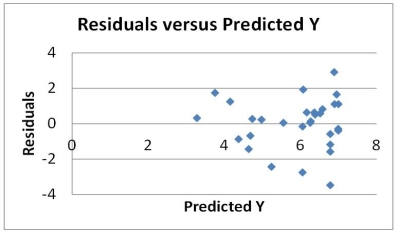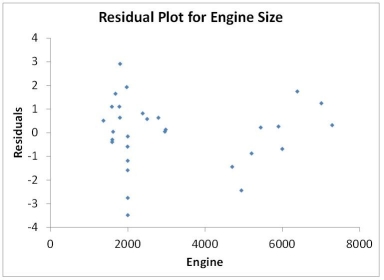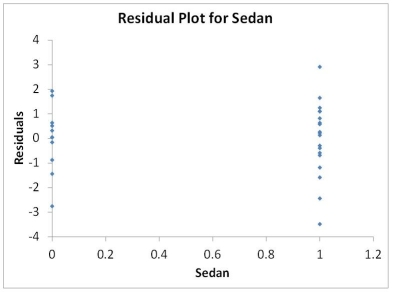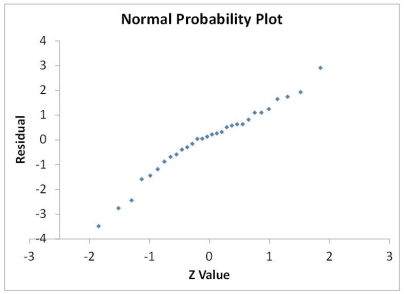TABLE 14-16
What are the factors that determine the acceleration time (in sec.)from 0 to 60 miles per hour of a car? Data on the following variables for 30 different vehicle models were collected:
Y (Accel Time): Acceleration time in sec.
X1 (Engine Size): c.c.
X2 (Sedan): 1 if the vehicle model is a sedan and 0 otherwise
The regression results using acceleration time as the dependent variable and the remaining variables as the independent variables are presented below.  The various residual plots are as shown below.
The various residual plots are as shown below. 


 The coefficient of partial determinations
The coefficient of partial determinations  and
and  are 0.3301,and 0.0594,respectively.
are 0.3301,and 0.0594,respectively.
The coefficient of determination for the regression model using each of the 2 independent variables as the dependent variable and the other independent variable as independent variables (  )are,respectively 0.0077,and 0.0077.
)are,respectively 0.0077,and 0.0077.
-Referring to Table 14-16,what is the p-value of the test statistic to determine whether engine size makes a significant contribution to the regression model in the presence of the other independent variable at a 5% level of significance?
Definitions:
Rationally Constructed
Developed or created based on logical reasoning and thoughtful consideration.
Item Response Theory (IRT)
A theory and method used in education and psychology to model the relationship between individuals' skills or traits and their performance on test items.
Empirical Method
A scientific approach that relies on observation and experiment rather than theory or pure logic.
Fundamental Personality Traits
Core traits believed to constitute the foundation of human personality, often related to the Big Five personality dimensions.
Q35: True or False: The base period should
Q38: Referring to Table 16-8,the forecast for profits
Q39: Referring to Table 13-4,set up a scatter
Q39: Referring to Table 16-16,what are the simple
Q84: Referring to Table 15-5,what is the value
Q93: Referring to Table 12-15,what is the p-value
Q125: Referring to Table 12-1,the company tests to
Q144: Referring to Table 13-3,suppose the director of
Q283: Referring to Table 14-8,the value of the
Q288: Referring to Table 14-10,the estimated mean change